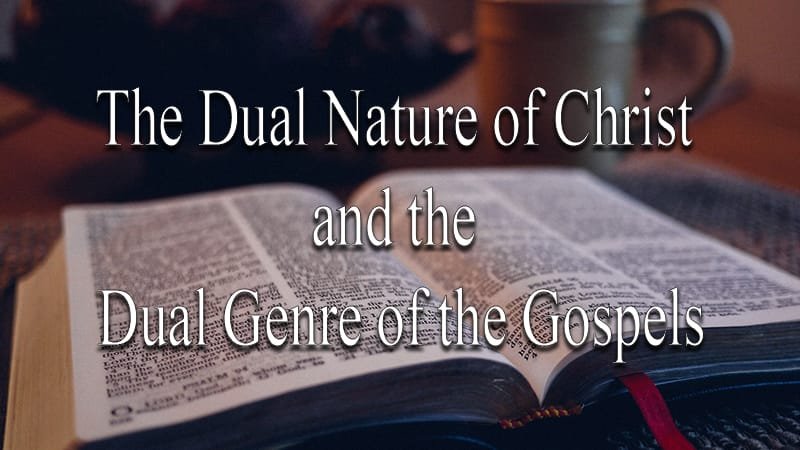The Dual Nature of Christ and the Dual Genre of the Gospels

The Synoptic Gospels—Matthew, Mark, and Luke—offer us three interconnected narratives that help us understand the person and work of Jesus Christ. The person and work of Christ are underpinned by His dual nature, which is a central theme in each of the Synoptic Gospels.
Jesus experienced human emotions, such as grief at the tomb of Lazarus, and yet He also exhibited divine power by raising Lazarus from the dead. Jesus experienced exhaustion and fell asleep during a boat ride, and after His disciples woke Him, He miraculously calmed the sea by speaking to the wind and waves. Jesus died for our sins and was gloriously and bodily resurrected. Each of the Synoptic Gospels reflects the dual nature of Christ. The truth of Christ’s dual nature is a cornerstone of the Christian faith.
Articulating and codifying this truth was so crucial that, in 451, the Council of Chalcedon convened to affirm that Jesus Christ is:
the same perfect in godhead, the same perfect in manhood, truly God and truly man, the same of a reasonable soul and body; homoousios (of the same essence, being, or substance) with the Father in godhead, and the same homoousios (of the same essence, being, or substance) with us in manhood… acknowledged in two natures without confusion, without change, without division, without separation.
The phrase hypostatic union was derived from what the Council of Chalcedon affirmed. Merriam-Webster defines hypostasis as “the substance or essential nature of an individual.” Jesus’ essential nature is fully human and fully divine, simultaneously.
The Gospels also reflect another kind of union: a union of genre and style. Charles L. Quarles, professor of New Testament and Biblical Theology at Southeastern Baptist Theological Seminary, uses the phrase “theological biographies” to describe the genre of the Gospels. Biography and theology are vastly different disciplines; biographers and theologians write with different aims and purposes, yet the Gospels reflect a union of these two styles. The Gospels contain distinct biographical elements: they recount real events, historical details, and the development of Jesus’ life in an organized, linear fashion.
At the same time, the Gospels are profoundly theological. They reveal the Word of God, affirm its authority, and demonstrate the application of God’s truth to our lives. The phrase “theological biography” highlights how the Gospels unite two different genres.
Just as Jesus is hypostatically human and divine, the Gospels that bring us to a greater understanding of His person and work are hypostatically both theological and biographical.






